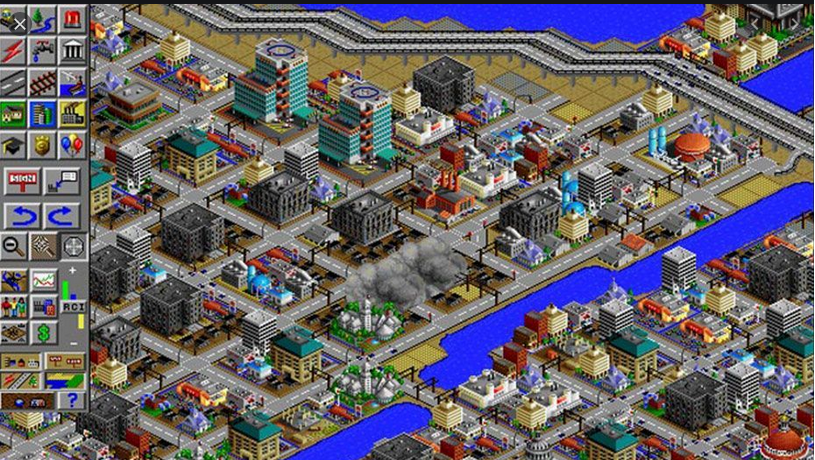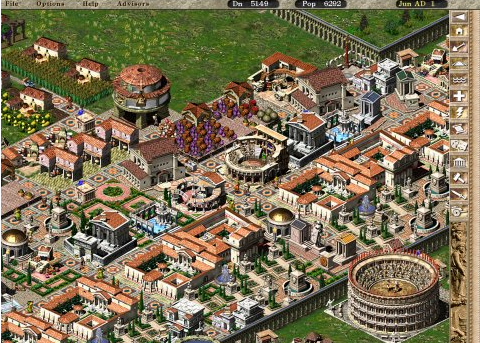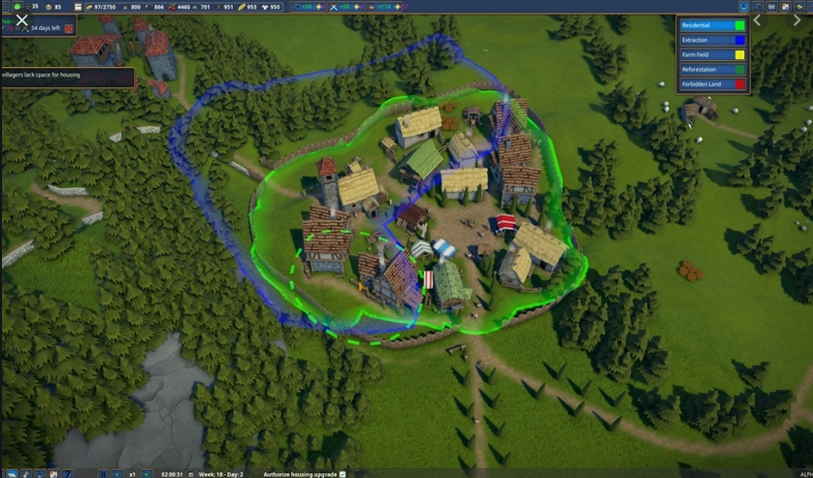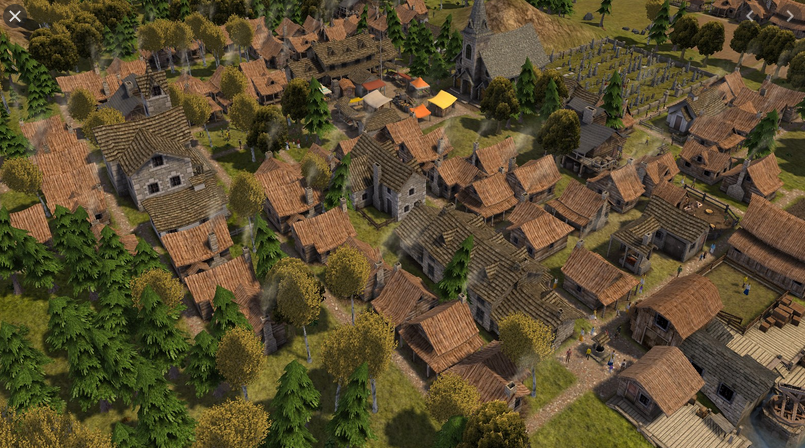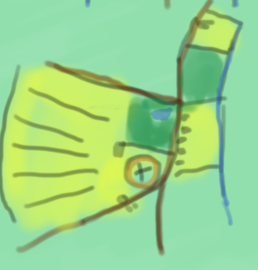THREAD on two of my passions: #medieval settlement history and #computergames
 https://abs.twimg.com/emoji/v2/... draggable="false" alt="😁" title="Grinning face with smiling eyes" aria-label="Emoji: Grinning face with smiling eyes">
https://abs.twimg.com/emoji/v2/... draggable="false" alt="😁" title="Grinning face with smiling eyes" aria-label="Emoji: Grinning face with smiling eyes">
Since many of us are working from home in these trying times, it seems safe to assume that more people than ever are indulging in playing the occasional computer game.
1/
Since many of us are working from home in these trying times, it seems safe to assume that more people than ever are indulging in playing the occasional computer game.
1/
A city builder is a specific kind of computer game in which you design a city, extract resources, set up production chains and ensure the growth of your city. City builders are much akin to strategy games, rewarding patience and strategy
2/
2/
The city builder has its origins far back in the 1990s in the combination of the strategy genre and the management genre, leading to games such as Sim City (1989), Caesar (1992) and Age of Empires (1997). (Screenshot = Sim City)
3/
3/
It did not take long before medieval themed city builders popped up. We may think of “Settlers” (1993) and “Knights and Merchants” (1998). Also the Anno games (1998), although set in the 1600s basically had a medieval theme. (screenshot = Caesar 3)
4/
4/
These games often start with plopping down a village center on a promising location near abundant resources. You then continue to gather these resources which grant you building materials for building new homes and facilities for your settlement. (screenshot = Foundation)
5/
5/
More specialized production chains might involve growing grain, milling the grain for flour and turning the flour into bread which feeds your villages. When done correctly, the reward of correct investments and planning is that you see your settlement grow.
6/
6/
This often leads to settlements growing organically from a couple of houses around a community center to a larger settlement with hundreds of people. However logical such an organic growth of a settlement might seem, it is not historically accurate. (Screenshot = Foundation)
7/
7/
Any gameplay loop that tells a story of linear growth is incongruent with how a medieval economy worked. medieval villagers were often living on the edge of a subsistence. Agricultural surpluses were skimmed by the church and the feudal lords.
8/
8/
Bad harvests, banditry, warfare and disease might decimate a village community at any time. It may therefore be clear that historical accuracy is often not a factor in the gameplay loop of city builders.
9/
9/
A notable exception is the game Banished in which death and weather do seriously stifle any kind of linear growth. In this city builder you are constantly fighting the odds and settlement growth is not guaranteed (screenshot = Banished)
10/
10/
A thing that is rarely touched upon in medieval city builders is how the village community relates to its overlords. Land ownership is here key. Land in the community might be owned by a lord, a local liegeman, a monastery or even directly by the duke or count.
11/
11/
taxes, rents and tithes were the organisational structures with which the landowner was tied to the farmers who worked the fields. Often the payment of taxes and tithes was linked to feast days.
12/
12/
An interesting side note is that the obligations the commoners had to the lord and the church such as military levy and seigneurial duties (e.g. working a mill) might drain the community from the needed manpower for tilling the land.
13/
13/
But something that is much more fundamental to the theme of a settlement building game, is how medieval settlement were actually planned and grew. Landscape historians and archaeologists have acquired a lot of insight into how this worked.
14/
14/
Let& #39;s start with the realization that medieval settlements in their first stages of development were often planned and laid out according to a specific design. In my research into the settlement history of West-Brabant I have encountered a couple.
15/
15/
Here is a sketch of a Brabantine circular manor (= vroonhoeve). This is a reinforced circular homestead, often next to a bend in the river, with moat containing several farms and a fan-like plot pattern radiating out from it. Such manors were often called BORCH
16/
16/
Here is a sketch of a Brabantine Tienakkerdorp (= ten acre village). This is a village set up with a moated enclosed church homestead as the center and a line of farms with plots next to it. the plots are bordered by a ditch (Middle Dutch Bansloot)
17/
17/
Here is a sketch of a Brabantine street settlement, often built with exploitation of nearby fenland in mind. It consists of a line of farms with associated evenly sized plots built in a line perpendicular to a raised road.
18/
18/
Let us first make clear that there were different types of exploitation settlements in use within one and the same medieval region. They often existed alongside each other.
19/
19/
So how where these settlements planned?
many medieval exploitation efforts were planned by a monastery or a consortium of free men who were granted permission (or bought permission) by the feudal lord to “colonize” the wilderness.
20/
many medieval exploitation efforts were planned by a monastery or a consortium of free men who were granted permission (or bought permission) by the feudal lord to “colonize” the wilderness.
20/
Land surveyors sent by the lord would first measure out the block or strips that would be taken in cultivation. Important blocks or strips were demarcated by hedges, woodwork, ditches or roads. Medieval names for these blocks/enclosures often survived into the modern day
21/
21/
Clearing the often wooded landscape in order to create arable land was done by cutting away the trees and bushes (Middle Dutch rode) or, alternatively, burning it away in controlled fires (Middle Dutch brant)
22/
22/
the presence of drinking water (a river or a brook) in the vicinity was an important considerations in choosing the location for the settlement. the vicinity of water entailed risk and reward because flooding was an ever present danger.
23/
23/
Floods could devastate arable land but might also fertilize it. Especally meadows were often in flood areas. For a cool example from an English context, check this thread by prof Susan Oosthuizen.
https://twitter.com/DrSueOosthuizen/status/1250070899279179779
24/">https://twitter.com/DrSueOost...
https://twitter.com/DrSueOosthuizen/status/1250070899279179779
24/">https://twitter.com/DrSueOost...
So how was such a settlement managed?
First of all, the quality of the soil had to be carefully controlled by crop rotation: specific crops were grown on different segments of the arable land with one part laying fallow to recover from the tilling (Dutch drieslagstelsel)
25/
First of all, the quality of the soil had to be carefully controlled by crop rotation: specific crops were grown on different segments of the arable land with one part laying fallow to recover from the tilling (Dutch drieslagstelsel)
25/
the cattle and sheep were put out to pasture on the common meadows guarded by a shepherd or cowherd. pigs were often allowed to forage in the nearby forests and killed in autumn before the winter starvation set in
26/
26/
roads and rivers were important for transport of crops and livestock and need to be maintained. They were essential to the payment of the tithe since tithe collectors assessed the harvest on the field and later collected the sheafs on the side of the road
27/
27/
Also the buildings within the community needed maintenace.
Farmhouses, community barns and stables were made of wood and often were rebuilt every few generations, only the name of the farm or homestead being continued
28/
Farmhouses, community barns and stables were made of wood and often were rebuilt every few generations, only the name of the farm or homestead being continued
28/
So what kind of dangers did a settlement face?
Well, first of all: weather was an important factor which dictated the success of the harvest. Storms, droughts and floods could devastate the harvest and decimate the community.
29/
Well, first of all: weather was an important factor which dictated the success of the harvest. Storms, droughts and floods could devastate the harvest and decimate the community.
29/
Disease and epidemics could also wreak havoc and might decimate entire families. The situation on the countryside often was a lot better in this regard than in the medieval towns, but still. Also diseases among livestock could impact the medieval subsistence economy
30/
30/
Then are the consequences of medieval warfare affecting the community:
Armies that passed by could plunder the village, burn the farms and execute villagers at will. Or they could also demand supplies, food and provisions as an emergency "tax"
31/
Armies that passed by could plunder the village, burn the farms and execute villagers at will. Or they could also demand supplies, food and provisions as an emergency "tax"
31/
But there could also be indirect consequences:
The overlord calling the banners and levying troops from the village community might extract a large part of the adult men
32/
The overlord calling the banners and levying troops from the village community might extract a large part of the adult men
32/
Then there were also internal threats to the fabric of the village community.
We may think of social unrest because of land disputes, feuding families, border disputes with neighboring parishes and allegations of witchcraft
33/
We may think of social unrest because of land disputes, feuding families, border disputes with neighboring parishes and allegations of witchcraft
33/
So, how would the above listed things contribute to a more historically accurate computer game about medieval settlement building?
- first of all, it would be cool if the settlement could first be planned out and was not forced to "grow organically" from a community center.
34/
- first of all, it would be cool if the settlement could first be planned out and was not forced to "grow organically" from a community center.
34/
Secondly, it would be really cool if we could not only build roads, but also ditches, hedges and enclosures. These features were after all central to the medieval experience of the cultivated landscape.
35/
35/
Thirdly, It would be awesome if such a game would embrace the concept of flood valleys that limit and endanger meadows and arable land.
36/
36/
And finally, something that would, imo, really add to the realism and historical flavor of a medieval themed city builder would be the introduction of mechanisms in which agricultural surpluses are skimmed by the church and the feudal lord. TITHES, TAXES, RENTS!
37/
37/
I would like to end this thread with some references to historical city building games that I enjoy.
First of all, Banished is a really cool game that is challenging and relaxing.
https://store.steampowered.com/app/242920/Banished/
38/">https://store.steampowered.com/app/24292...
First of all, Banished is a really cool game that is challenging and relaxing.
https://store.steampowered.com/app/242920/Banished/
38/">https://store.steampowered.com/app/24292...
Also the game Foundation, of which I included some screenshots earlier in this thread, is a lot of fun. A downside is that this game does not allow road building and really relies heavily on the "settlements grow organically" trope.
https://store.steampowered.com/app/690830/Foundation/
39/">https://store.steampowered.com/app/69083...
https://store.steampowered.com/app/690830/Foundation/
39/">https://store.steampowered.com/app/69083...
Conclusion:
I think medieval themed city building games could benefit greatly from incorporating some of the things we know about medieval settlement history into the gameplay loop. If any game developer might come across this thread, please be in contact https://abs.twimg.com/emoji/v2/... draggable="false" alt="😁" title="Grinning face with smiling eyes" aria-label="Emoji: Grinning face with smiling eyes">
https://abs.twimg.com/emoji/v2/... draggable="false" alt="😁" title="Grinning face with smiling eyes" aria-label="Emoji: Grinning face with smiling eyes"> https://abs.twimg.com/emoji/v2/... draggable="false" alt="🧐" title="Face with monocle" aria-label="Emoji: Face with monocle">
https://abs.twimg.com/emoji/v2/... draggable="false" alt="🧐" title="Face with monocle" aria-label="Emoji: Face with monocle">
I think medieval themed city building games could benefit greatly from incorporating some of the things we know about medieval settlement history into the gameplay loop. If any game developer might come across this thread, please be in contact
If anyone wants to contact me in connection to this thread, please feel free to sent me a direct message and I will give you my emailadress.  https://abs.twimg.com/emoji/v2/... draggable="false" alt="🙂" title="Slightly smiling face" aria-label="Emoji: Slightly smiling face">
https://abs.twimg.com/emoji/v2/... draggable="false" alt="🙂" title="Slightly smiling face" aria-label="Emoji: Slightly smiling face">

 Read on Twitter
Read on Twitter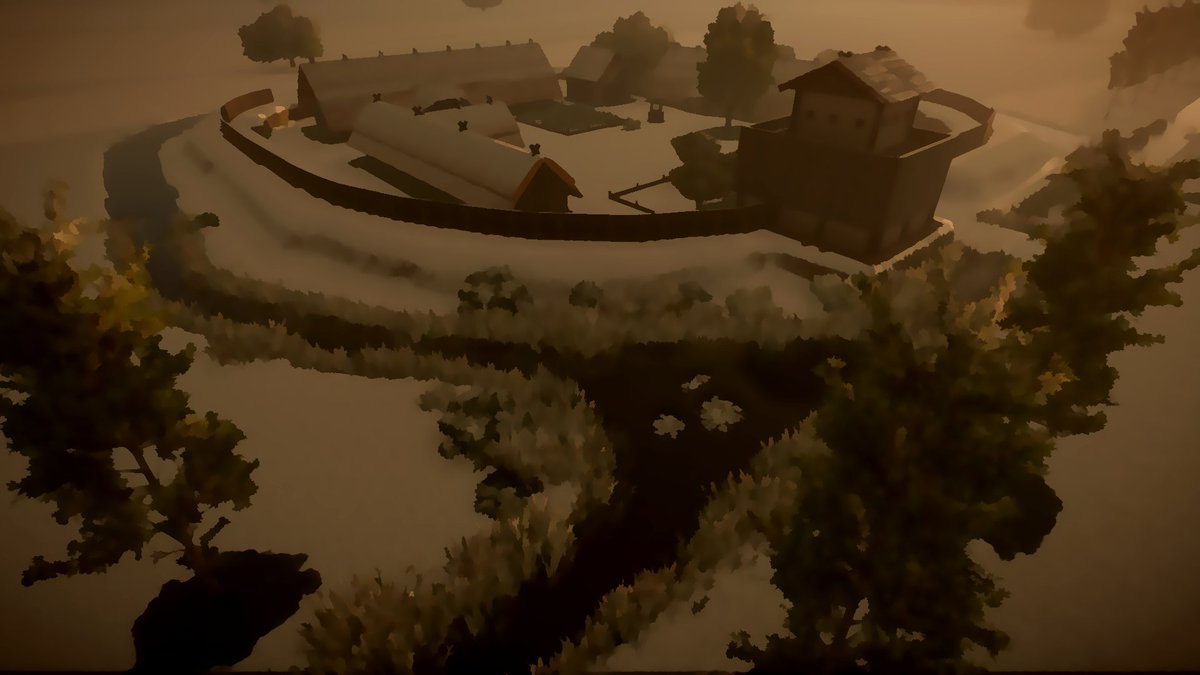 Since many of us are working from home in these trying times, it seems safe to assume that more people than ever are indulging in playing the occasional computer game.1/" title="THREAD on two of my passions: #medieval settlement history and #computergameshttps://abs.twimg.com/emoji/v2/... draggable="false" alt="😁" title="Grinning face with smiling eyes" aria-label="Emoji: Grinning face with smiling eyes">Since many of us are working from home in these trying times, it seems safe to assume that more people than ever are indulging in playing the occasional computer game.1/" class="img-responsive" style="max-width:100%;"/>
Since many of us are working from home in these trying times, it seems safe to assume that more people than ever are indulging in playing the occasional computer game.1/" title="THREAD on two of my passions: #medieval settlement history and #computergameshttps://abs.twimg.com/emoji/v2/... draggable="false" alt="😁" title="Grinning face with smiling eyes" aria-label="Emoji: Grinning face with smiling eyes">Since many of us are working from home in these trying times, it seems safe to assume that more people than ever are indulging in playing the occasional computer game.1/" class="img-responsive" style="max-width:100%;"/>
